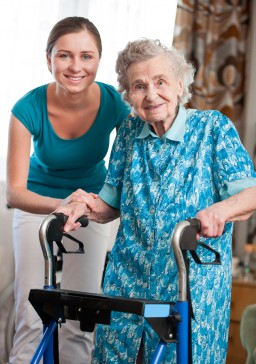 Employees in the health and social care sectors may be involved in moving and handling activities such as moving equipment, laundry, catering, distributing supplies or assisting patients/residents in moving. The moving and handling of people is a regular task in health and social care, which if not done safely, can cause serious injury to service users and staff.
Employees in the health and social care sectors may be involved in moving and handling activities such as moving equipment, laundry, catering, distributing supplies or assisting patients/residents in moving. The moving and handling of people is a regular task in health and social care, which if not done safely, can cause serious injury to service users and staff.
Common carers’ injuries
The most common injuries carers experience are back injuries. Injuring your back will limit your movement and your ability to work or care for someone. It could take a long time for you to recover. Lifting someone incorrectly can also damage fragile skin, cause shoulder and neck injuries, increase existing breathing difficulties, or cause bruising.
Poor moving and handling practice can lead to:
- back pain and musculoskeletal disorders, which can lead to inability to work
- moving and handling accidents – which can injure both the person being moved and the employee
- discomfort and a lack of dignity for the person being moved
Managing moving and handling risks
If risks from moving and handling are to be managed successfully, there must be support from those at the top of the organisation, whatever its size. Key elements include:
- recognition of the risks
- commitment to introducing precautions to reduce that risk
- a statement of clear roles and responsibilities
- an explanation of what is expected from individual employees
- arrangements for training and providing / maintaining equipment
- arrangements for monitoring compliance
- a commitment to supporting people who have been injured in connection with their work
Employers must reduce the risk of injury to staff and people using care services by:
- avoiding those manual handling tasks that could result in injury, where reasonably practicable
- assessing the risks from moving and handling that cannot be avoided
- putting measures in place to reduce the risk, where reasonably practicable
Employees must:
- follow appropriate systems of work and use the equipment provided
- co-operate with their employer and let them know of any problems
- take reasonable care to ensure that their actions do not put themselves or others at risk
Use moving and handling equipment
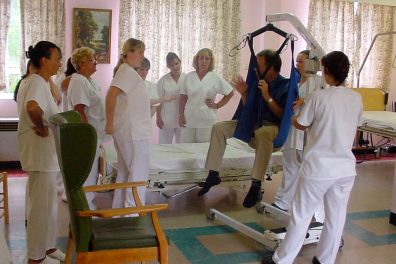 The correct use of moving and handling equipment may reduce the risk of injury. The type and amount of equipment needed will vary according to the specific needs of care service users. When providing equipment, providers should consider the needs of the individual (while helping to maintain independence wherever possible), and the safety of the individual and staff.
The correct use of moving and handling equipment may reduce the risk of injury. The type and amount of equipment needed will vary according to the specific needs of care service users. When providing equipment, providers should consider the needs of the individual (while helping to maintain independence wherever possible), and the safety of the individual and staff.
Necessary equipment may include:
- a selection of hoists – eg hoists to raise fallen individuals from the floor, standing hoists, mobile hoists etc
- bath hoists or bath lifts and/or adjustable height baths
- a sufficient number of slings of different types and sizes
- slide sheets
- transfer boards used to assist in moving from and to different furniture (eg. seat to wheelchair)
- turntables used to assist in turning people around
- electric profiling beds – for dependent/immobile residents
- wheelchairs
- handling belts to assist residents who can support their own weight, e.g. to help them stand up. They should not be used for lifting
- lifting cushions used to assist people to get up from the floor or bath
- bed levers, support rails/poles
- emergency evacuation equipment
- suitable walking aids, hand rails etc for people needing minor assistance
- bariatric equipment (i.e. for use with very heavy people)
Introduce equipment only after assessment and use in accordance with the care plan and manufacturer’s instructions.
Review moving and handling training
Ensure that staff who participate in moving and handling activities are properly trained, that their training is relevant and that a schedule of refresher training and/or continuous professional development is in place.
- Osteopaths For Industry offers a range of moving and handling training courses.


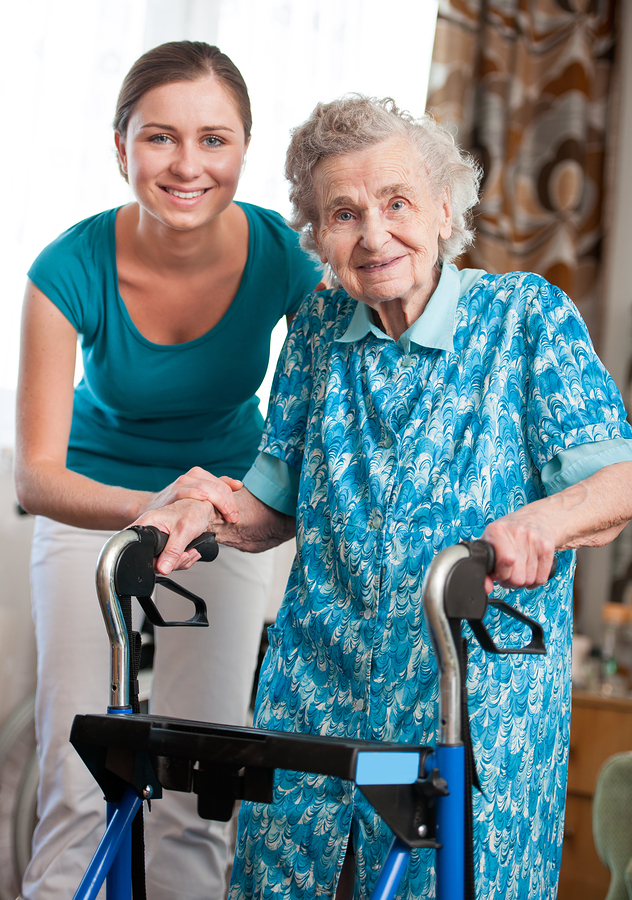
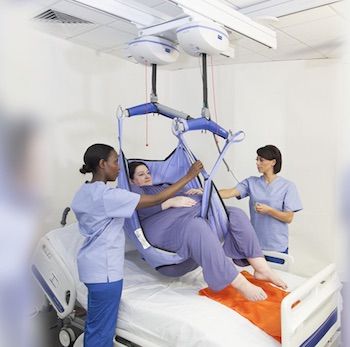
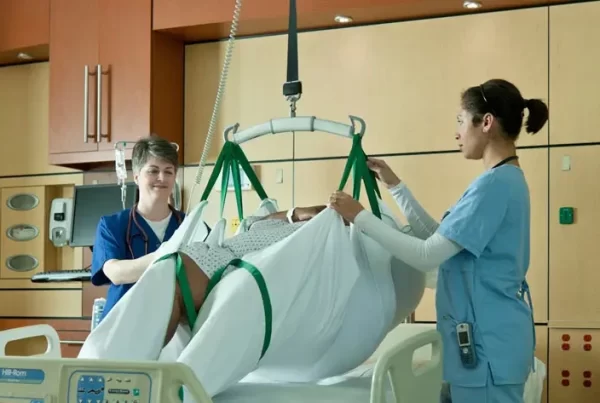




I agree that this is a very important issue in the healthcare industry. During my time work as such a place I came to realize how much it can physically impact my body. The tips you share, especially using a back brace, were great in helping keep my body healthy. http://www.thepersonaldevelopmentcompany.org.uk/
Do you have any evidence to show that the online video reduce risk to patient or staff? Are you saying the staff just have to watch a video?
I have seen the fear on my elderly Mother’s face when a hoist is used. Her body goes rigid and she screams. She is 91, very frail-weighs no more than 7stone and has Vascular Dementia.
Is the hoist really necessary?
Sorry to hear that your mother is so upset when a hoist is used. We cannot comment on your specific situation of course – the judgement of whether to use a hoist or not will depend on several factors and the weight of the person being moved should indeed be one of these factors. It is a fine balance between the looking after the mental and physical wellbeing of the patient, whilst at the same time reducing the risk of injury for the carer. The employer does have a legal duty of care to protect their employees health and safety. I’m sure you will have already done so, but the best course of action would be to speak to the people caring for your mother and see if there would be any other alternative to hoisting, or if not, if they can make the use of hoist any more comfortable and less upsetting for her.